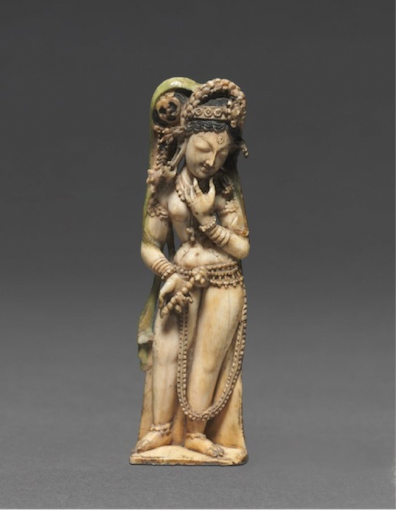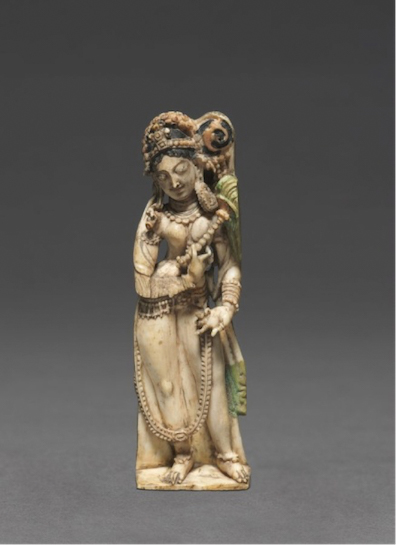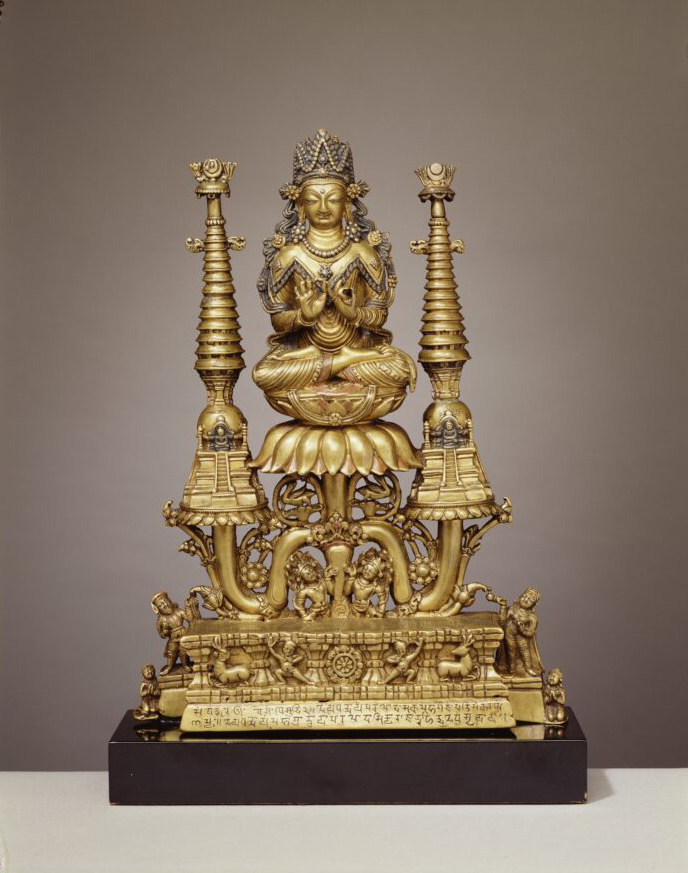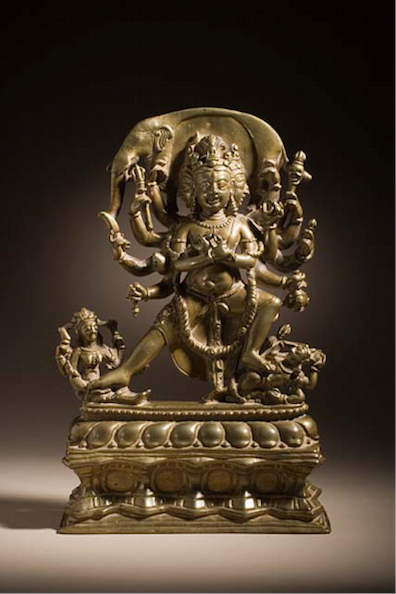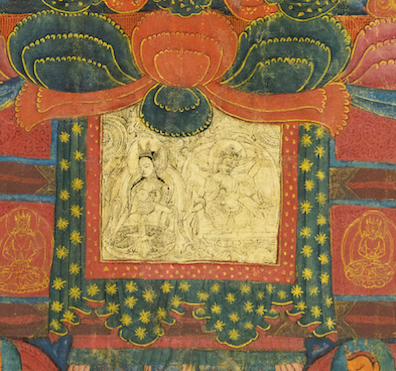The Rubin Museum’s exhibition Collecting Paradise honors astounding artistic traditions that span a thousand-year period. Most importantly, it celebrates the people who created artworks in Kashmir and people of the neighboring kingdoms in the western Himalayas who appreciated and treasured them, and tried to emulate the Kashmiri aesthetics for centuries.
We could compare the relationship of the western Himalayans towards the art and culture of Kashmir to that of a love story and it really is. The exhibition’s presentation, coincidently or not, outlines the stages in such a relationship.
First, the western Himalayans saw the amazing art and culture in Kashmir and were drawn to it. Then, they traveled there and got to know it well and invited Buddhist teachers and artists to the western Himalayas to help them establish their own Buddhist tradition. Finally, they collaborated to create a unique Buddhist culture in the western Himalayas. Centuries later, they and their successors reminisced about the initial encounter with the art and culture of Kashmir, the creative relationship that followed it, appreciating the significance and what it meant for them.
One object in the exhibition is a pair of small sculptures carved out of ivory that depict female attendants bearing flywhisks.
The figures pose in timeless postures, yet they’re dressed in the Kashmiri fashion of the time, with tops and trousers that cling to their form and their elegant proportions and stances. Their postures also reveal that they originally flanked a central figure, which at present is not part of this sculptural ensemble. Their heads are turned toward this absent central figure, their eyes slightly downcast, bodies turned toward the center thus standing in deference. Their form is as emblematic as it is real, representing both an ideal beauty and the Kashmiri aesthetics of the time.
Another extraordinary sculpture is an elaborately cast image of a crowned Buddha from the Rockefeller Collection, Asia Society, New York.
It displays markings of royal patronage, which is confirmed by the inscription at the base of the sculpture. These royal donors are depicted flanking the base on both sides in two pairs of smaller figures. This kind of donor depiction is not unique and is usually accompanied by an inscription. What is remarkable is that three out of four are women. The king is shown on the left, recognizable by his beard, offering a wreath to the Buddha. The queen is on the right, offering incense. The two kneeling figures with their hands in veneration are on each side of and below these standing royal donors.
It turns out that women were frequent patrons of the arts and often requested blessings on behalf of their husbands or sons. This is evident in both Kashmiri and western Himalayan art. The amount of details found on every part of the sculpture and its overall sophistication clearly indicate this was a lavish sponsorship.
Also of note is the sculpture of Buddhist tantric deity Chakrasamvara. Kashmir was a hub of Tantric Buddhist teachings and, as evidenced by this sculpture, also of tantric art. The deity is shown in great detail and fluidity. His form and its plasticity in modeling represent typical characteristics of such Buddhist images, with each attribute and adornment clearly defined. His subdued opponents are under his forceful stance above the lotus on top of a rocky pedestal, another recognizable feature of Kashmiri sculpture.
The legacy of art from Kashmir has continually been honored in the western Himalayas. This is demonstrated in this exhibition by two different objects, a manuscript illumination—created most probably by Kashmiri artists who were invited to work in the western Himalayas—and a detail from a Tibetan scroll painting several centuries later painted by Tibetan artists.
When compared, these two images show startlingly close parallels in representing the goddesses, their three-quarter views, wasp-like waists, richly patterned textiles of their garments, and the figures’ proportions. It is amazing that Kashmiri aesthetics were actively recreated by the artists and their patrons in the western Himalayas after so many centuries.
